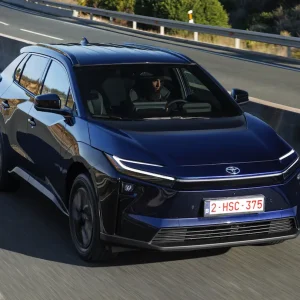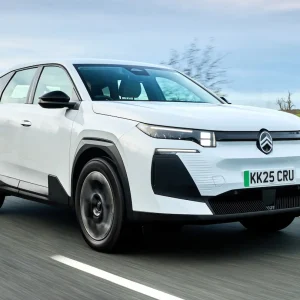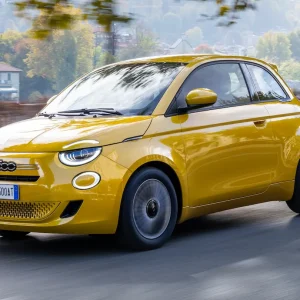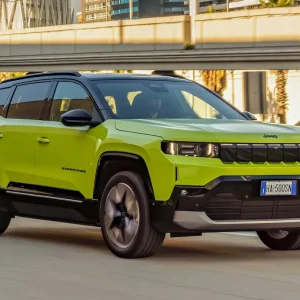Gone are the days when the Smart nameplate equalled tiny, but clever city cars, sadly. Instead, Smart was first reimagined as an all-electric brand in 2017. In 2019, Smart owner Mercedes realised the brand in its current form was going to struggle to be profitable, so instead formed a joint venture with Geely, a Chinese company which also owns Lotus, Polestar, and Volvo amongst others. The first car of this collaboration, which will be built in China using Geely technology (with plenty of European input), is this #1 – with other Smart models to follow.
Sized similarly to a Volkswagen ID.3, after the sawn-off profile of the recent ForTwo and ForFour, the #1 looks like a conventional SUV, with the style of the Mercedes EQA about it – which we’re sure is not coincidental. Standout styling features of the Smart are the front and rear lights – which are formed into light bars. There are also distinctive front and rear air dams and the ‘Smart’ badging. The side is probably the most interesting part of the #1’s design, with the upward curve to the chunky underbody cladding. Plus, flush door handles, unusual alloy wheel designs and a chrome Smart logo halfway up the rear roof pillar on the curvy window line of our test car, which was in Premium spec.
Inside, again the feeling is more Mercedes than Smart in the #1. This can be seen in the design with the tall centre console, the metal detailing on the multi-function three-spoke steering wheel and switchgear. Giveaways that you’re driving a Smart rather than a Mercedes can be seen in the gloss white trim on the dashboard, centre console and door pulls. There are also not one, but two Smart logos on the steering wheel. Still, even though this is an early car, the quality appears to have stepped up a few notches, with the glass panoramic roof giving welcome added light, again giving the illusion that you’re driving a Mercedes rather than a Smart.
A key part of the #1’s interior is the large 12.8in touchscreen, with its big, cartoonish fox graphic on the bottom right. With the fox moving around, it also seemed a bit busy when we set out on a short pre-set route, but once we’d worked out where the key functions were, it was surprisingly intuitive. Thankfully, considering the heat on the day of our test drive, all the climate controls are permanently at the bottom of the screen. We’re not going to comment on any of the other functionality, as this was an early car.
Elsewhere, the driving position is comfortable and multi-adjustable, and even with a lanky driver in the front, the rear seat remains comfortable with plenty of space. Although, all this interior space seems to be at the expense of the boot, which is merely average at 313 litres – still, if you look under the false floor, there’s some extra space and although we didn’t try it, apparently there’s a small frunk at the front for the charging cables.
On the road, the #1 impresses – but it’s a tidy rather than involving drive, even with 268hp, which makes the Smart one of the most powerful EVs in its class (we also got to try the fastest Brabus version briefly, with an incredible 422hp, but 268hp is more than enough). Still, the steering has a reasonable amount of feel, the #1 handles well and there’s high levels of grip. The ride also seems decently balanced, feeling less bothered by road imperfections than you might expect.
One point of note was the regen system. The #1 benefits from three settings, but even the standard felt strong enough to not make us want to choose the ‘Strong’, or ‘e-Pedal’ modes.
Our short drive made it impossible to judge this Smart’s 260+ mile range from the 66kWh battery, but even so, the #1 impresses. We look forward to spending some time with a UK-spec car when they are available.
Smart #1 Premium
P11D: TBC
On sale: TBC
Residual value: TBC
Depreciation: TBC
Fuel: TBC
Service, maintenance and repair: TBC
Cost per mile: TBC
Fuel consumption: TBC
CO2 (BIK %): 132g/km (31%)
BIK 20/40% a month: TBC
Luggage capacity: 313 litres
Battery size/power: 66kWh/268hp





